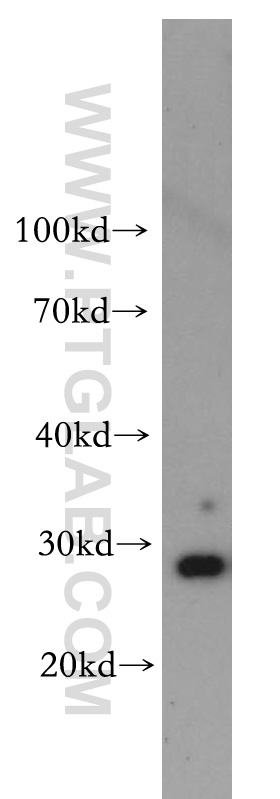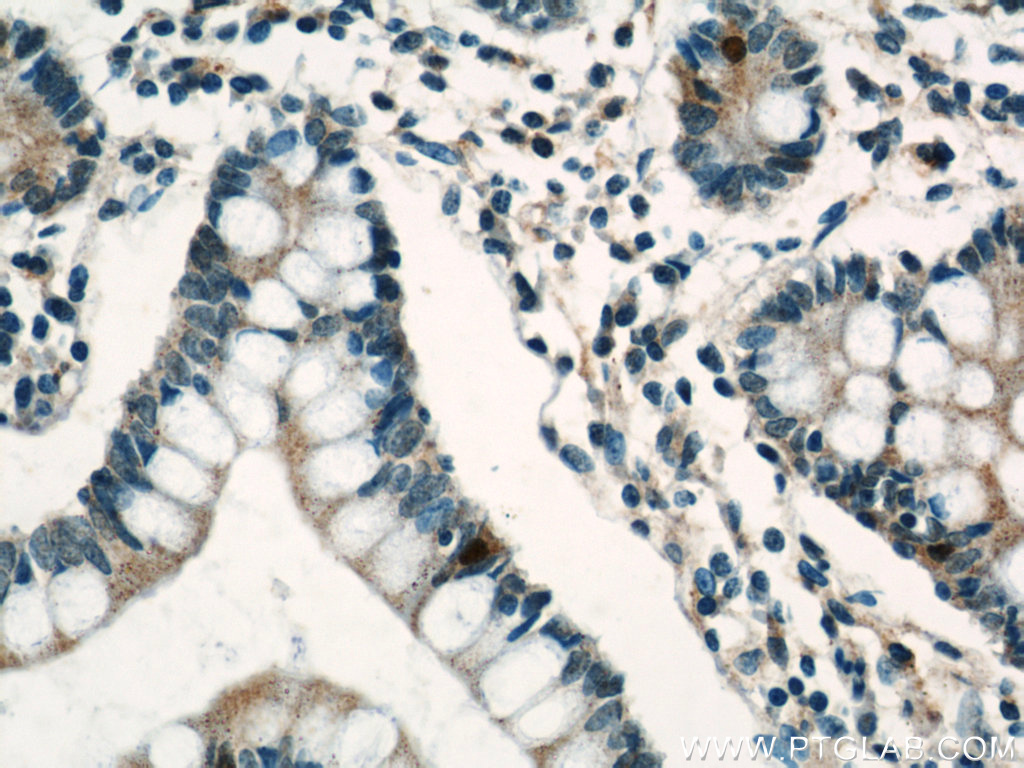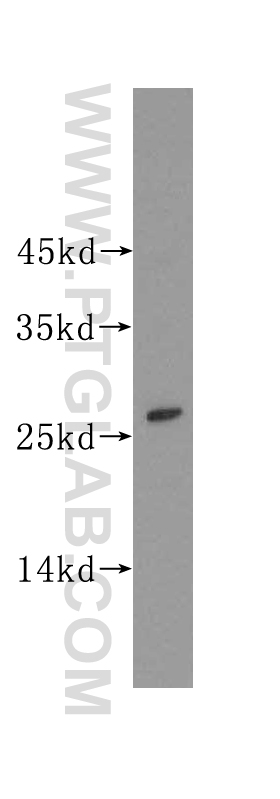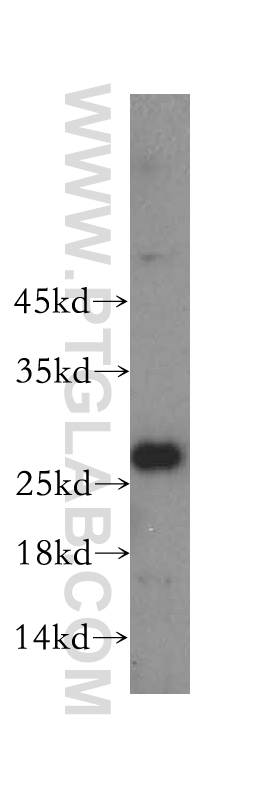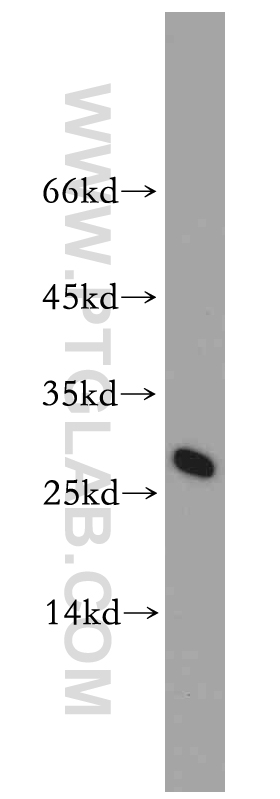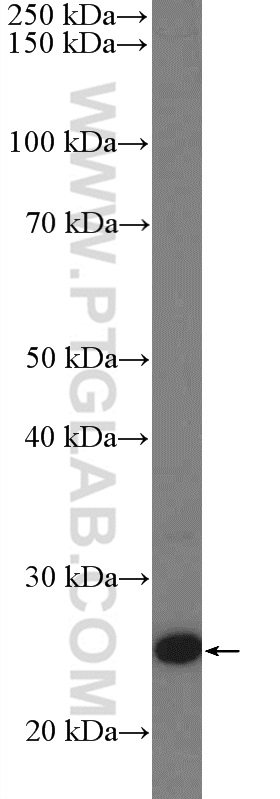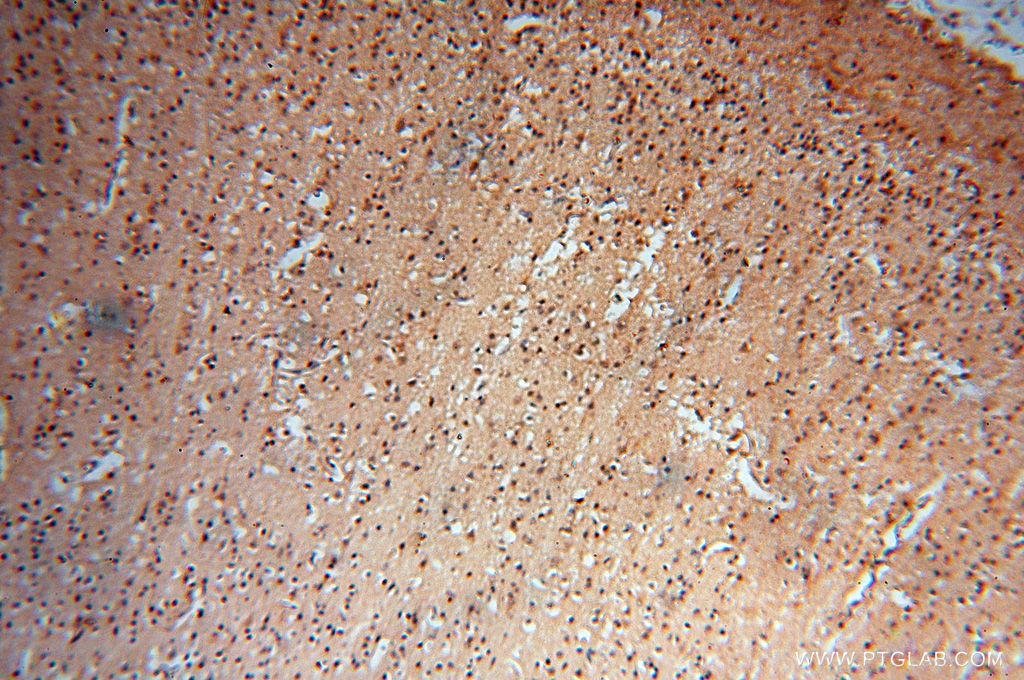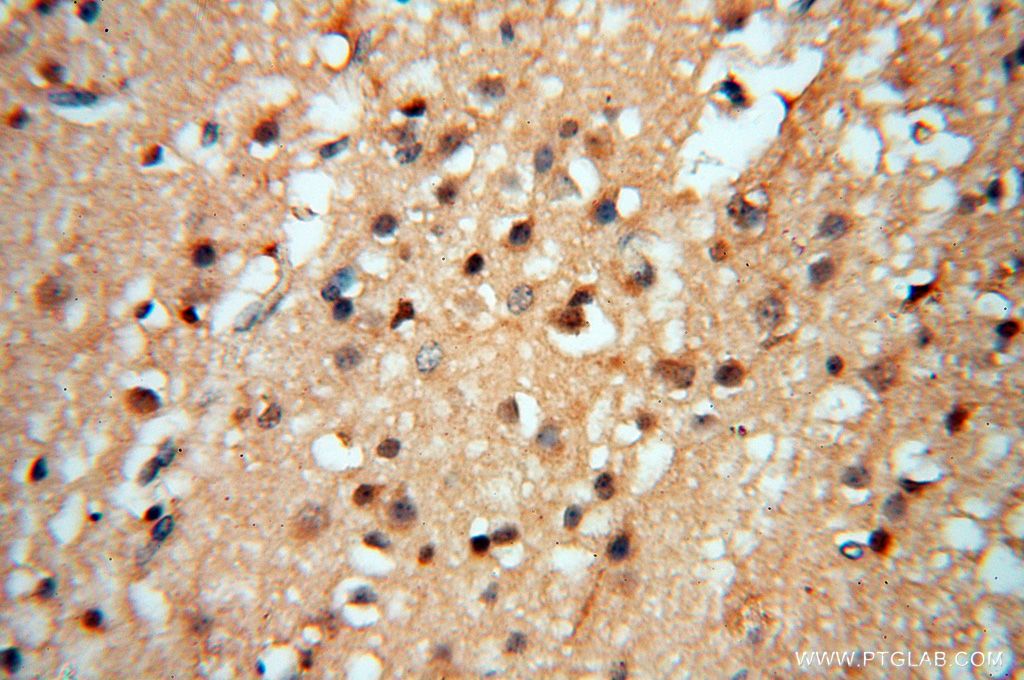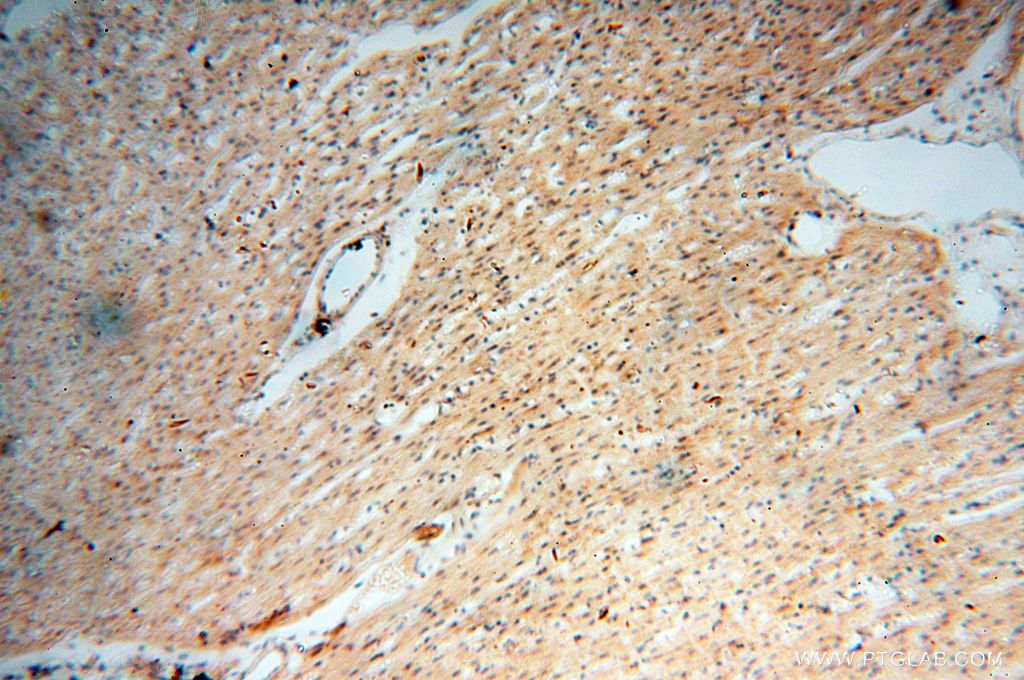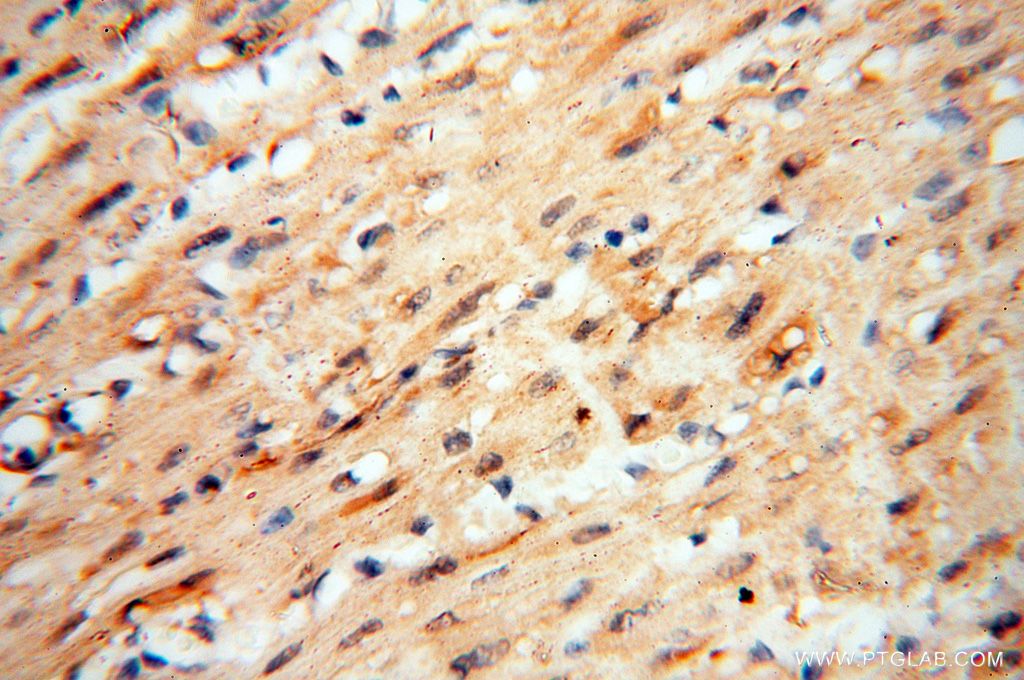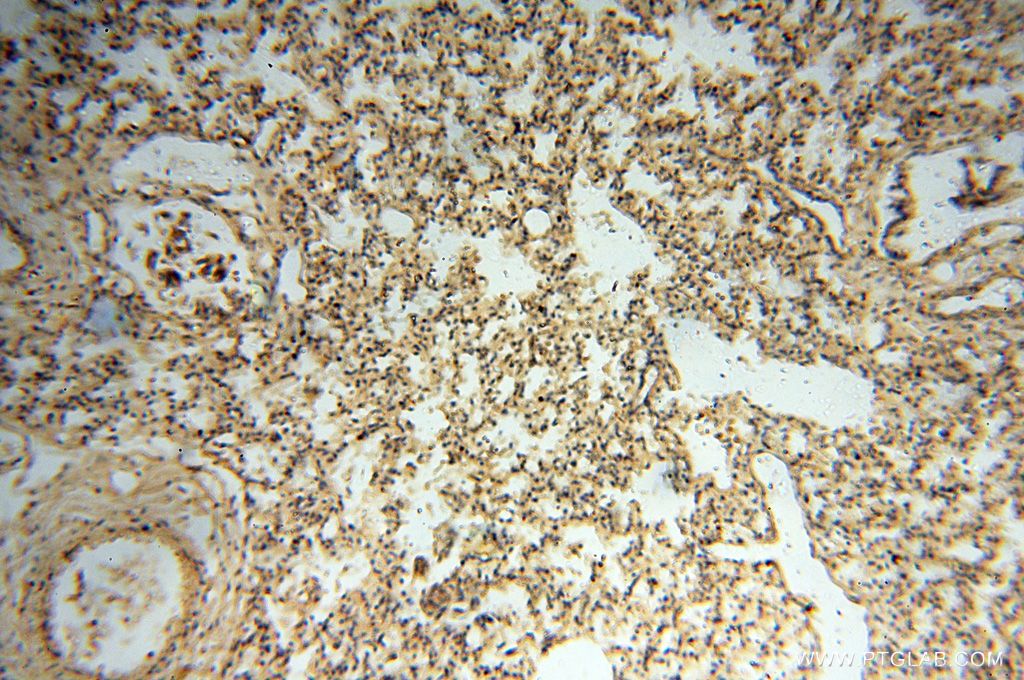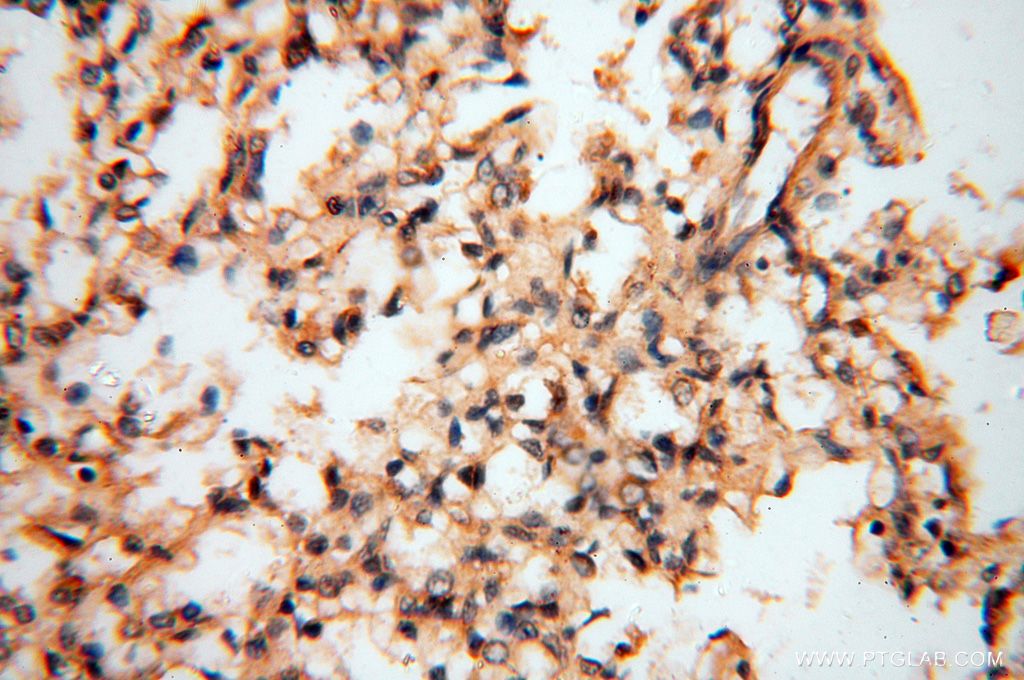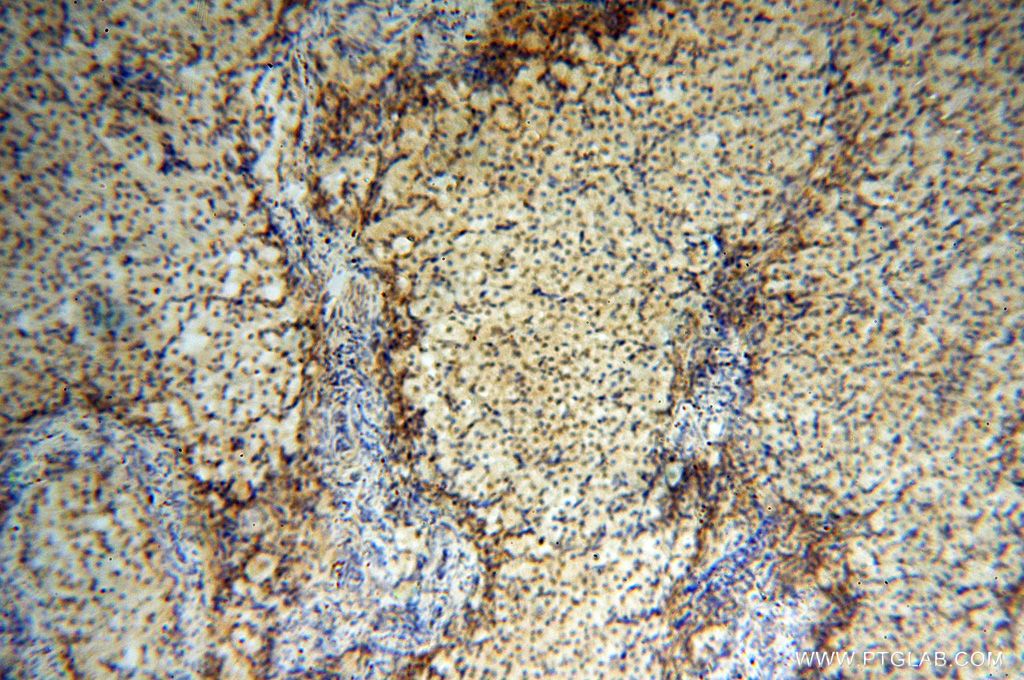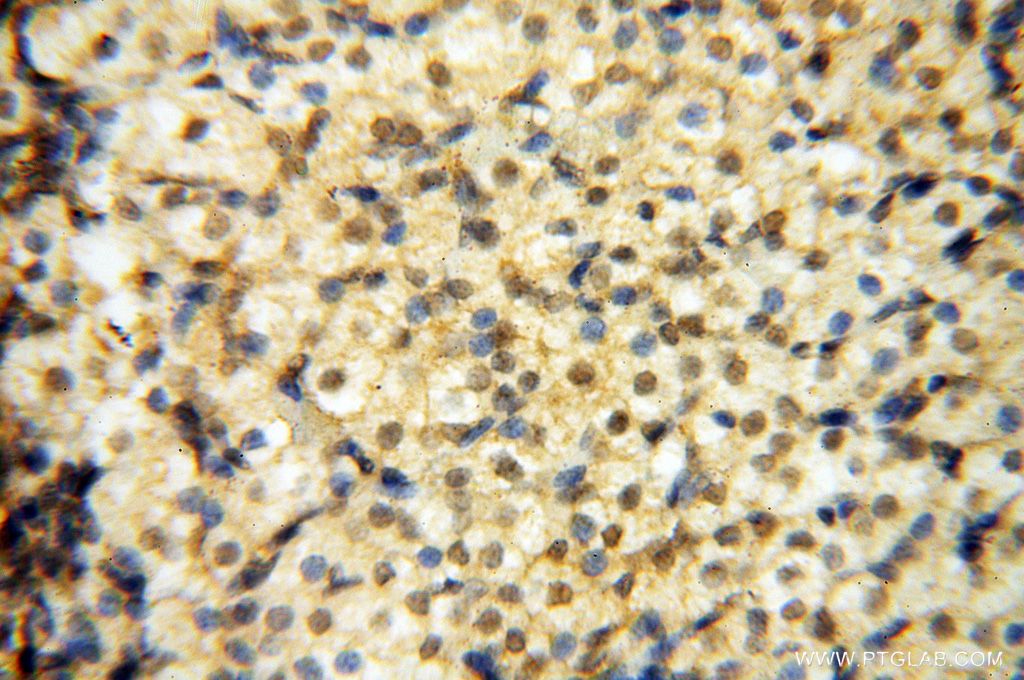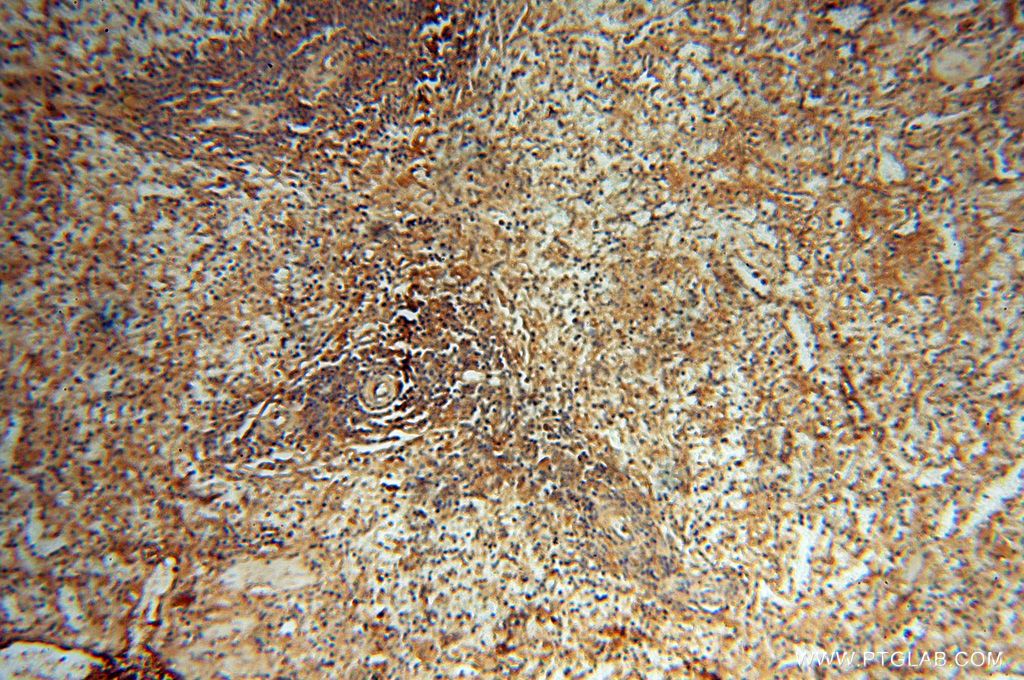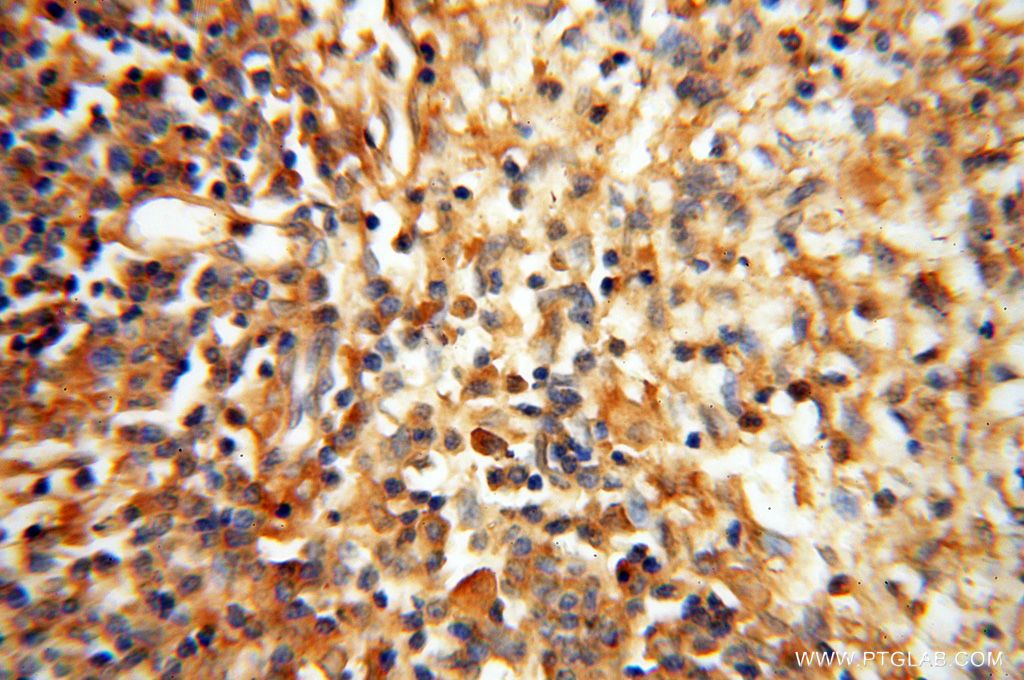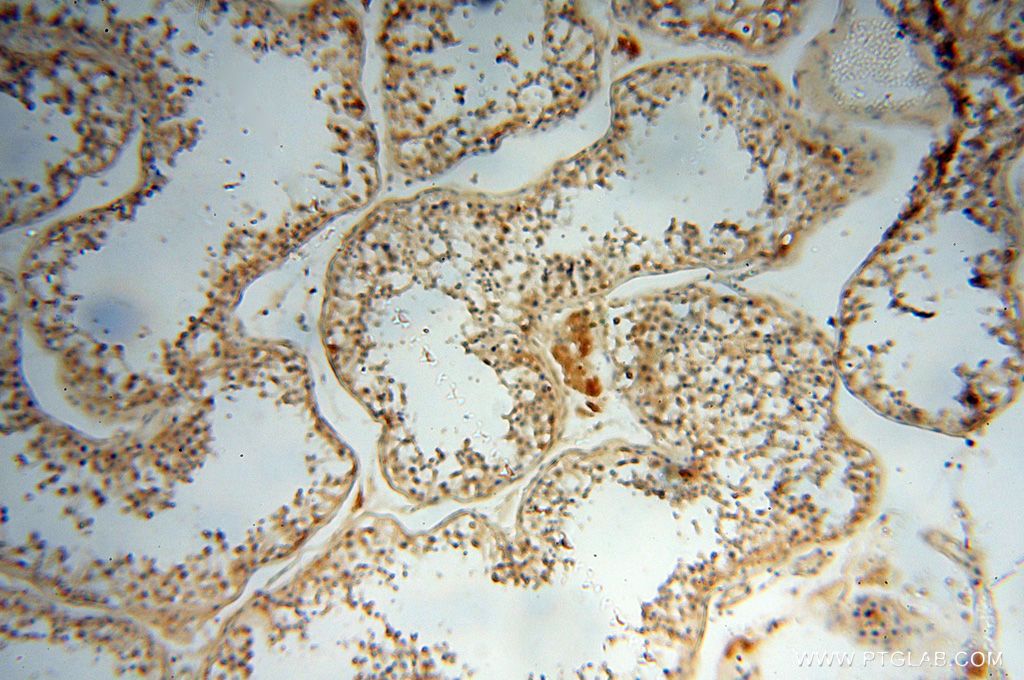验证数据展示
经过测试的应用
| Positive WB detected in | hESC cells, human brain tissue, human heart tissue, NCCIT cell, mouse liver tissue |
| Positive IHC detected in | human small intestine tissue, human ovary tissue, human heart tissue, human testis tissue, human spleen tissue, human lung tissue, human brain tissue Note: suggested antigen retrieval with TE buffer pH 9.0; (*) Alternatively, antigen retrieval may be performed with citrate buffer pH 6.0 |
推荐稀释比
| 应用 | 推荐稀释比 |
|---|---|
| Western Blot (WB) | WB : 1:200-1:1000 |
| Immunohistochemistry (IHC) | IHC : 1:20-1:200 |
| It is recommended that this reagent should be titrated in each testing system to obtain optimal results. | |
| Sample-dependent, Check data in validation data gallery. | |
产品信息
16177-1-AP targets Lin28A-specific in WB, IHC, IF, ELISA applications and shows reactivity with human, mouse, rat samples.
| 经测试应用 | WB, IHC, ELISA Application Description |
| 文献引用应用 | WB, IHC, IF |
| 经测试反应性 | human, mouse, rat |
| 文献引用反应性 | human, mouse, rat |
| 免疫原 |
Peptide 种属同源性预测 |
| 宿主/亚型 | Rabbit / IgG |
| 抗体类别 | Polyclonal |
| 产品类型 | Antibody |
| 全称 | lin-28 homolog (C. elegans) |
| 别名 | LIN28A, Lin-28A, LIN28, Lin 28A, LIN 28 |
| 计算分子量 | 23 kDa |
| 观测分子量 | 28 kDa |
| GenBank蛋白编号 | NM_024674 |
| 基因名称 | LIN28 |
| Gene ID (NCBI) | 79727 |
| RRID | AB_2135038 |
| 偶联类型 | Unconjugated |
| 形式 | Liquid |
| 纯化方式 | Antigen affinity purification |
| UNIPROT ID | Q9H9Z2 |
| 储存缓冲液 | PBS with 0.02% sodium azide and 50% glycerol, pH 7.3. |
| 储存条件 | Store at -20°C. Stable for one year after shipment. Aliquoting is unnecessary for -20oC storage. |
背景介绍
LIN28 is one of the four key human factors (OCT4, SOX2, NANOG and LIN28) used to reprogram human fibroblasts to an embryonic stem (ES) cell-like state known as the induced pluripotent stem (Ips) cell. LIN28 is a marker of undifferentiated human embryonic stem cells and a cytoplasmic mRNA-binding protein that binds to and enhances the translation of the IGF2 mRNA. LIN28 has also been shown to bind to the let-7 pre-miRNA and block production of the mature let-7 microRNA in mouse embryonic stem cells. Affinity purified rabbit anti-LIN28 can be used to demonstrate pluripotency of ES and Ips cells, and to detect LIN28 transgene expression in the process of reprogramming. This antibody is a rabbit polyclonal antibody raised against a peptide mapping within human LIN28.This antibody recognize Lin28A specifically.
实验方案
| Product Specific Protocols | |
|---|---|
| IHC protocol for Lin28A-specific antibody 16177-1-AP | Download protocol |
| WB protocol for Lin28A-specific antibody 16177-1-AP | Download protocol |
| Standard Protocols | |
|---|---|
| Click here to view our Standard Protocols |
发表文章
| Species | Application | Title |
|---|---|---|
Cell Death Differ LIN28A enhances regenerative capacity of human somatic tissue stem cells via metabolic and mitochondrial reprogramming. | ||
Cancer Res Activation of the Lin28/let-7 Axis by Loss of ESE3/EHF Promotes a Tumorigenic and Stem-like Phenotype in Prostate Cancer. | ||
EMBO Rep Lin28 enhances de novo fatty acid synthesis to promote cancer progression via SREBP-1.
| ||
EMBO Rep The human FOXM1 homolog promotes basal progenitor cell proliferation and cortical folding in mouse. | ||
Cell Death Dis Long noncoding RNA TUG1 facilitates osteogenic differentiation of periodontal ligament stem cells via interacting with Lin28A. | ||

